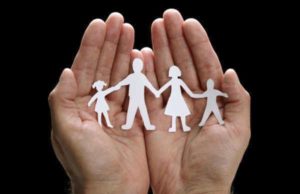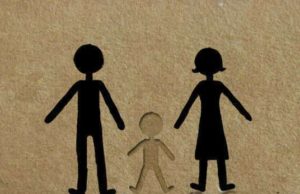
Domestic Violence Overview Explained
Domestic violence is a widespread problem that affects many individuals and families around the world, with millions experiencing abuse each year. Domestic violence, also known as intimate partner violence, occurs between people who are in a close relationship such as marriage, dating, or family members. It can take on many different forms, including physical, emotional, sexual, and economic abuse.
Domestic violence often involves a pattern of behavior that one partner uses to control the other. It can happen to anyone, regardless of their gender, age, race, or socioeconomic status. However, women are more likely than men to experience domestic violence, with one in four women experiencing abuse in their lifetime.
This article will provide an overview of domestic violence, including its different forms, warning signs, and the resources available to victims and survivors. Additionally, we will explore the impact that current legislation and government resources have had regarding domestic violence.
Forms of Domestic Violence
Domestic violence can take on many different forms, including physical, emotional, sexual, and economic abuse. Each form of abuse can be damaging and can leave long-lasting effects on the victim.
Physical Abuse
Physical abuse is a form of domestic violence that includes hitting, slapping, shoving, choking, or any other actions that physically harm the victim. This type of abuse can result in bruises, broken bones, or other physical injuries. It can also lead to permanent disability or even death.
Emotional Abuse
Emotional abuse is a form of domestic violence that involves behaviors that undermine the victim’s self-esteem, such as name-calling, insults, belittling, or threatening behavior. It can also include isolation, controlling behavior, and manipulation, which can lead to the victim feeling trapped and powerless.
Sexual Abuse
Sexual abuse is a form of domestic violence that ranges from unwanted sexual contact to rape. It can include coercing the victim into sexual acts or withholding sex as a means of control. Sexual abuse can also include forced prostitution or human trafficking.
Economic Abuse
Economic abuse is a form of domestic violence that involves controlling the victim’s finances, including stealing money or forcing the victim to give up control of their finances. Economic abuse can also involve preventing the victim from working or seeking employment.
Warning Signs of Domestic Violence
There are many warning signs that someone may be experiencing domestic violence. These include physical signs such as bruises and injuries, but also emotional and behavioral changes. Here are some warning signs to look out for:
• Unexplained injuries or frequent trips to the hospital.
• Changes in behavior, such as low self-esteem, depression, or anxiety.
• Isolation from friends and family.
• Controlling behavior, such as checking the victim’s phone or email without permission.
• Manipulative behavior, such as accusing the victim of cheating or infidelity.
• Unusual financial arrangements, such as the victim being forced to turn over their paycheck to the abuser.
• Changes in sleeping patterns or appetite.
• Substance abuse.
• Withdrawal from activities or hobbies they once enjoyed.
It is important to remember that everyone’s experience with domestic violence is unique, and not all victims show the same warning signs.
Resources for Victims and Survivors
If you or someone you know is a victim of domestic violence, there are resources available to help. Here are some resources to consider:
1. National Domestic Violence Hotline: This organization provides 24/7 support for victims of domestic violence. Their services include crisis counseling, safety planning, and referrals to local resources. Call 1-800-799-SAFE (7233) or visit their website at www.thehotline.org.
2. Local Domestic Violence Organizations: Many communities have organizations that provide resources and support for victims of domestic violence. These organizations often offer counseling, legal assistance, and emergency shelter.
3. Law Enforcement: If you or someone you know is in immediate danger, call 911 or your local law enforcement agency. The police can help protect you and connect you with resources to help you stay safe.
4. Medical Professionals: Doctors and nurses are often trained to recognize the signs of domestic violence and can provide support and referrals to local resources.
5. Legal Assistance: If you are a victim of domestic violence and need legal help, you may be able to receive free or low-cost legal assistance. Contact your local domestic violence organization or visit www.lawhelp.org.
Current Legislation and Government Resources
Over the years, there have been numerous federal, state, and local laws and policies designed to address domestic violence and provide support to victims. Here are some of the most significant pieces of legislation:
1. Violence Against Women Act (VAWA): This federal law, first passed in 1994 and reauthorized in 2018, provides funding for programs that support victims of domestic violence, sexual assault, and stalking. It also prohibits discrimination against victims in housing, employment, and other areas.
2. Family Violence Prevention and Services Act (FVPSA): This federal law provides funding for programs that provide services to victims of domestic violence, including emergency shelter and counseling.
3. The Victims of Crime Act (VOCA): This federal law provides funding for programs that support victims of domestic violence, sexual assault, and other crimes.
4. State Laws: Many states have their own laws that address domestic violence, including criminal and civil laws that provide protection for victims and their children.
In addition to these laws, the federal government has created resources to help victims and prevent domestic violence. These include the National Domestic Violence Hotline, the Office of Violence Against Women, and the National Resource Center on Domestic Violence.
Conclusion
Domestic violence is a widespread problem that affects millions of people each year. It can take on many different forms, including physical, emotional, sexual, and economic abuse. There are warning signs to look out for, and resources available to help victims and survivors, including hotlines, local organizations, law enforcement, medical professionals, and legal assistance. The government has passed laws and policies to address domestic violence and provides resources to help prevent it and support victims. It is important to continue to raise awareness about domestic violence and provide support to those who need it.
Domestic violence cases, though rarer than other forms of cases involving family law, are very significant for how serious and damaging they may be. Such cases may take any of a number of different forms, as family law domestic violence cases may involve attempts to end the domestic violence, or attempts to remove children form an environment in which domestic violence takes place. Family law legal advice is generally available for victims of spousal abuse, one of the many types of domestic violence, who seek to leave their spouses so as to find safety somewhere else.
If a victim of domestic violence takes the case to court, which he or she should, then he or she may be able to obtain a temporary restraining order. In terms of family law domestic violence cases, a temporary restraining order, or TRO, is perhaps the best possible option as a start to preventing domestic violence. Most family law legal advice concerning domestic violence cases will likely suggest to a victim that he or she should first obtain a TRO, so as to prevent the violence from continuing while other legal action is taken. Family law domestic violence cases will still require a victim to go before a judge in order to obtain a TRO, and the victim will have to provide evidence of the domestic abuse. Most TROs can actually be issued without a full legal proceeding, however, as it may be important to issue them promptly so as to prevent any further domestic violence. Family law legal advice would likely lead a victim to pursue a TRO immediately upon suffering from an incident of domestic violence, so as to prevent any further incidences.
A victim of domestic violence who goes to court at a later point in time in order to obtain a restraining order will likely require a number of important pieces of evidence, in order to obtain the restraining order. There is much family law legal advice out there concerning exactly what evidence a victim should bring, including suggestions of police reports about the domestic violence, and photographs of the damage done. For example, when a victim is hurt in a domestic violence incident, then the victim should immediately contact the police, both to obtain their help, and to ensure that there is a police report filed for the incident, which can be used in a later court proceeding.
The orders that can be issued through family law domestic violence proceedings include orders of protection as well as temporary restraining orders. Temporary restraining orders ensure that the abuser must leave the residence immediately, but they do not provide the same level of deterrence as orders of protection. Orders of protection are the full restraining orders most often thought of commonly, as they can prohibit abusers from even coming close to the protected party, and can often involve the abuser being required to obtain some form of counseling.
Family law domestic violence cases primarily concern obtaining orders, such as temporary restraining orders or protection orders, as mentioned above, but a victim may choose to pursue other avenues of family law in order to help prevent future instances of domestic violence. For example, a victim may attempt to pursue a divorce from an abusive husband, in addition to the TRO which she obtained earlier, so as to ensure that she is legally and financially free of him.






















